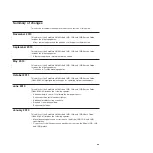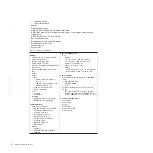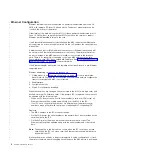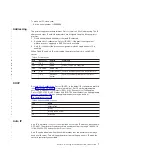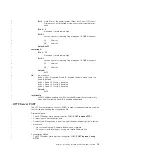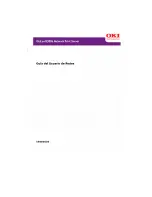
Ethernet Configuration
Ethernet communications are supported on printers manufactured after June 10,
2013, with firmware EC level 14.00 and above. The date of manufacture can be
found on the bottom of the printer.
Older levels of the main logic cards (MLC) for these printers manufactured prior to
June 10, 2013 will not support Ethernet. MLCs that have the circuitry to support
Ethernet will be identified internal to the card.
If an Ethernet Interface adapter is installed and the MLC indicates that Ethernet is
not supported, an error message is printed. On the 1xR printers, the ready light will
blink amber.
A media access control (MAC) address is necessary for Ethernet function and will
be stored in the Ethernet interface adapter at the factory. The printer will print out
an error message if the MAC address is invalid or is not stored in the Interface
card. There is no capability of changing or cloning a MAC address in the field.
Every interface card (IFC) has a unique MAC address. See “Toshiba Diagnostics for
the Ethernet Printer” on page 39 for more information.
If an Ethernet adapter is detected, the firmware will not back-level to a pre-Ethernet
supported level.
Ethernet addressing options can be changed via:
1. Offline menus: See “Firmware offline tests” on page 45 for more information.
Reset Network Configuration will reset the user-modifiable network configuration
items to factory default. MAC is not affected.
2. Web interface.
3. Configuration utility.
4. Web API configuration download.
When these options are changed, they are stored in the MLC (main logic card) and
backed up in the IFC (interface card). If the printer's IFC is replaced, the values will
be updated with the following logic:
v
When an IFC does not have a valid serial number (a card from FRU stock), all
Ethernet options will be copied automatically from the MLC to the IFC.
v
If an IFC has a valid serial number, but it is different from the printer's serial
number, a menu will print with the options of updating MLC or updating IFC.
Remarks:
v
The MAC address in the IFC will never change.
v
On the 1NR printer, the serial number of the printer will not be overwritten by the
serial number in the IFC.
v
On the 2xR printer, the menu will ask which serial number is correct. The
Ethernet options will be updated along with the serial number and other stored
data.
Note:
The exception to the logic above occurs when the IFC is setup as a slave
card. When the IFC is a slave card, the Ethernet options used will be those
pulled from the IFC.
Slave cards may be used by a depot or integrators to setup configurations or flash
the printer's firmware without changing any settings on the MLC before it is shipped.
6
SureMark Hardware Service
|
|
|
|
|
|
|
|
|
|
|
|
|
|
|
|
|
|
|
|
|
|
|
|
|
|
|
|
|
|
|
|
|
|
|
|
|
|
|
|
|
|
|
|
Summary of Contents for 1NA
Page 2: ......
Page 8: ...vi SureMark Hardware Service ...
Page 10: ...viii SureMark Hardware Service ...
Page 12: ...x SureMark Hardware Service ...
Page 16: ...xiv SureMark Hardware Service ...
Page 18: ...xvi SureMark Hardware Service ...
Page 46: ...28 SureMark Hardware Service ...
Page 56: ...38 SureMark Hardware Service ...
Page 88: ...70 SureMark Hardware Service ...
Page 90: ...Assembly 1 Models 1NR 1NA and 1ND 1 2 3 4 5 7 6 72 SureMark Hardware Service ...
Page 92: ...Assembly 1 continued 74 SureMark Hardware Service ...
Page 108: ...90 SureMark Hardware Service ...
Page 109: ......
Page 110: ...G362 0565 05 ...








